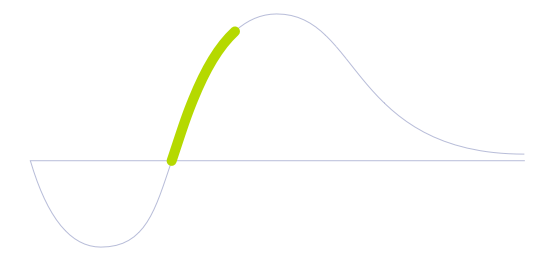Carbon Capture, Utilisation and Storage

Technology Life Cycle
Marked by a rapid increase in technology adoption and market expansion. Innovations are refined, production costs decrease, and the technology gains widespread acceptance and use.

Technology Readiness Level (TRL)
Prototype is fully demonstrated in operational environment.

Technology Diffusion
Adopts technologies once they are proven by Early Adopters. They prefer technologies that are well established and reliable.

Carbon Capture, Utilisation, and Storage (CCUS) is designed to tackle one of the most pressing challenges of our time: climate change. By addressing the excessive carbon dioxide (CO2) emissions from industrial processes and power generation, CCUS offers another possibility in the global efforts to mitigate global warming, along with greenhouse gas emission reduction. The technology encompasses three main components: capturing CO2 from emission sources before it reaches the atmosphere, utilising the captured CO2 for various applications such as enhanced oil recovery or in the production of materials like concrete, and securely storing it underground or in the ocean to prevent its release into the atmosphere.
This solution, which includes various technical methods and approaches, works by capturing CO2 emissions produced during manufacturing processes, such as the combustion of fossil fuels and other industrial activities, such as cement or steel production. Other methods absorb CO2 from the atmosphere through a direct-air capture engineering system. It then utilises the captured CO2 in several ways, including enhanced oil recovery and the creation of valuable byproducts, such as concrete. Also, the stored CO2 can be safely sequestered underground, preventing it from re-entering the atmosphere and exacerbating climate change.
CCUS is pivotal for achieving sustainability and enabling smart growth across multiple sectors, including energy, manufacturing, and construction, by allowing these industries to reduce their carbon footprint while continuing operations. It plays a crucial role in industries that are challenging to decarbonise, offering a pathway to significantly lower emissions without compromising industrial and economic development. The technology's versatility extends to enhancing the sustainability of digital infrastructure, healthcare, food production, and urban mobility through cleaner energy and material innovation.
Future Perspectives
The hazards produced by CO2 exposure when transformed into byproducts need to be studied accurately before being marketed. Because it does not necessarily fight fossil fuels, this recycling system may encompass a better temporary alternative than a long-term solution. While countries across the globe prepare to shift to clean energy sources, authorities could create policies that require existing fossil fuel plants to acquire CO2 capturing credits, making it mandatory for the repurposing of the air pollutant gas.
Image generated by Envisioning using Midjourney